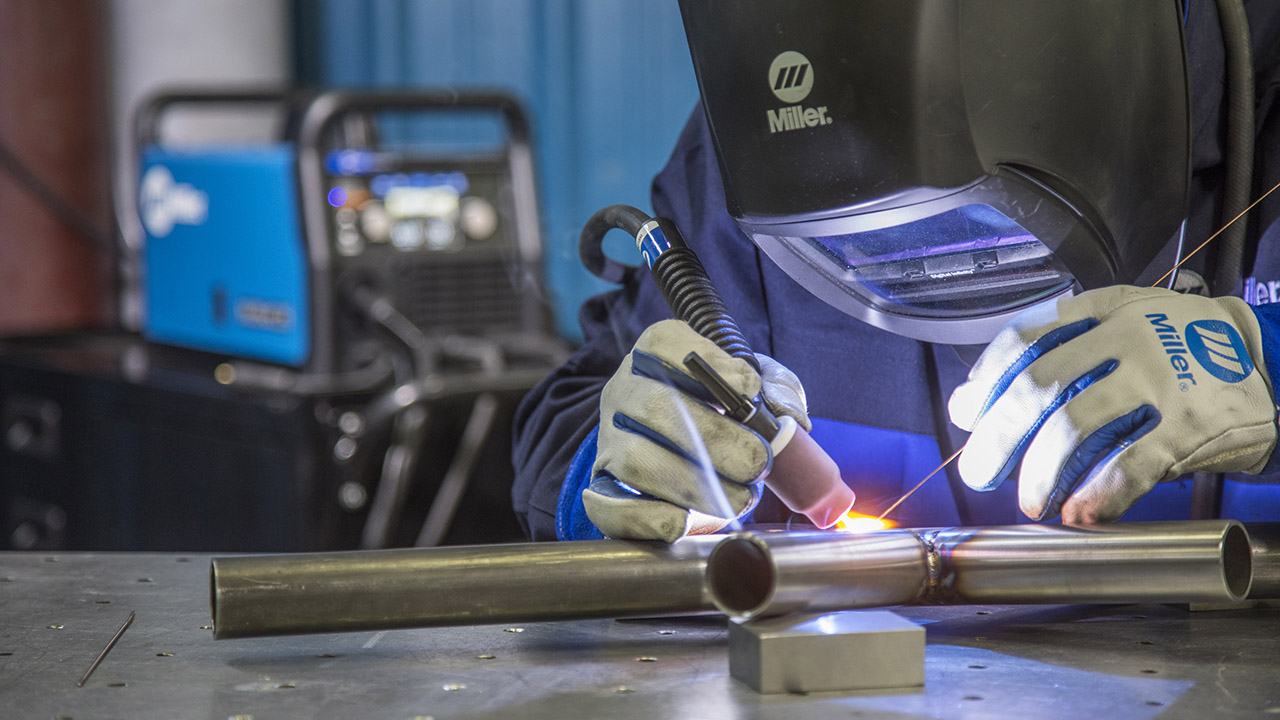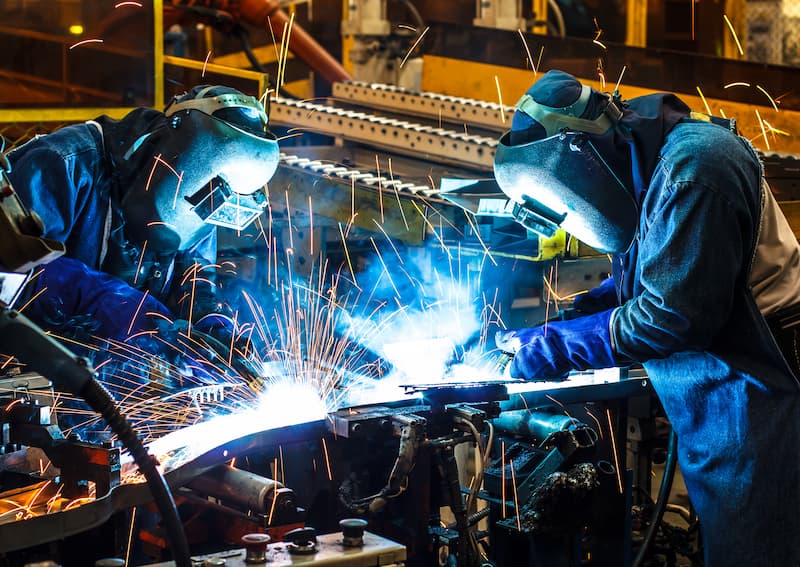Avoid welding failures with advice from Montana Mobile Welding and Repair Belgrade Fabrication
All Regarding Welding: Key Insights Into Techniques and Ideal Practices for Success
Welding encompasses a range of strategies, each matched for specific materials and applications. Recognizing these approaches, such as GMAW, SMAW, and TIG, is vital for achieving perfect results. The best tools and security practices can not be neglected. As prep work and repairing play important duties in the welding procedure, understanding these components can greatly improve the high quality of the end product. What are the key elements that assure a successful weld?
Recognizing Different Welding Techniques
Welding strategies incorporate a selection of techniques, each fit to particular applications and products. Among the most usual strategies are Gas Steel Arc Welding (GMAW), Protected Steel Arc Welding (SMAW), and Tungsten Inert Gas Welding (TIG) GMAW, likewise called MIG welding, is preferred for its rate and flexibility, making it excellent for thin materials. SMAW, or stick welding, is favored for its simplicity and performance in outside environments, specifically with thicker metals. TIG welding supplies precision and control, making it ideal for elaborate job and non-ferrous steels (Montana Mobile Welding and Repair Welding). Each strategy has its one-of-a-kind advantages and considerations, allowing welders to pick the very best approach based on the task's demands, material type, and preferred outcomes. Recognizing these methods is vital for effective welding
Crucial Welding Tools and Tools
While different welding strategies need details skills, the appropriate devices and devices are equally important for accomplishing high quality outcomes. Crucial welding devices consists of welding makers, which differ depending upon the strategy-- such as MIG, TIG, or stick welding. Protective gear, consisting of gloves, aprons, and headgears, warranties safety and security and comfort during the procedure. Furthermore, clamps and fixtures help secure products in position, guaranteeing accuracy in welds. Consumables like welding poles, wire, and protecting gas are likewise crucial elements that influence the high quality of the weld. Devices such as cutters and mills assist in surface preparation and post-weld completing, contributing to a professional end result. Buying top quality equipment ultimately boosts the effectiveness and effectiveness of welding jobs.
Safety Practices in Welding
Correct safety methods are important in the welding industry to shield employees from prospective hazards. Welders have to put on ideal personal safety devices (PPE), consisting of helmets with correct shading, gloves, and flame-resistant apparel. Sufficient ventilation is important to minimize direct exposure to unsafe fumes and gases created during the welding process. Additionally, employees should be learnt the correct handling of welding equipment to prevent accidents. Fire precaution, such as keeping combustible products far from the welding area and having fire extinguishers easily offered, are needed. Normal examinations of tools and work areas can assist identify possible dangers before they cause mishaps. By adhering to these security practices, welders can produce a safer working atmosphere and minimize risks connected with their trade.
Preparing Products for Welding
Preparing materials for welding is a crucial step that significantly influences the top quality and stability of the final item (Belgrade Fabrication). Proper preparation includes cleansing the surface areas to get rid of contaminants such as dirt, rust, and oil, which can compromise the weld. Methods such as grinding, sanding, or using solvents are generally employed to achieve a clean surface area. Furthermore, ensuring that the materials fit together snugly is essential; gaps can cause weak welds. It's also essential to take into account the placement and positioning of the parts, as this will certainly impact the convenience of welding and the last outcome. Ultimately, selecting the proper filler product and making sure compatibility with the base metals is important for attaining solid, long lasting welds
Tips for Getting High-Quality Welds
Accomplishing premium welds needs focus to information and adherence to best techniques throughout the welding process. Proper joint prep work is necessary, ensuring surfaces are free and clean from impurities. Picking the suitable filler product and welding strategy based on the base metals is vital for excellent bonding. Keeping consistent travel rate and angle while welding can promote and protect against defects uniformity. Additionally, regulating heat input is essential; extreme warm can bring about bending and weakened joints. Consistently evaluating the welds throughout the process enables instant adjustments if needed. Utilizing suitable post-weld therapies, such as cleansing and stress and anxiety alleviation, can improve the resilience and integrity of the weld, eventually making sure an effective result.
Repairing Typical Welding Issues
Welding usually offers difficulties that can influence the high quality and stability of the last product. Common problems such as porosity, inconsistent weld grains, and overheating can arise, each calling for specific fixing methods. Recognizing these troubles is important for welders to improve their skills and achieve excellent results.
Porosity Problems Described
Although porosity can frequently be neglected, it stays an essential problem in welding that can compromise the honesty of a finished item. Porosity describes the presence of little gas pockets within the weld grain, which can deteriorate the joint and lead to premature failing. This problem generally arises from contaminants, moisture, or inappropriate securing gas protection during the welding procedure. To mitigate porosity, welders must verify that the base products are dry and tidy, use appropriate protecting gases, and e6013 maintain consistent welding parameters. On a regular basis evaluating the tools and environment can additionally help identify prospective concerns prior to they manifest in the weld. Addressing porosity properly is important for accomplishing strong, sturdy welds that satisfy high quality criteria.

Inconsistent Weld Beans
Inconsistent weld beads can greatly influence the high quality and stamina here are the findings of a completed item. Various aspects add to this problem, consisting of improper travel speed, wrong amperage settings, and inconsistent electrode angles. When the welder relocates too swiftly, a bead may show up slim and lack infiltration, while moving as well gradually can cause too much accumulation. Furthermore, using the wrong amperage can result in either undercutting or too much spatter, both of which compromise weld integrity. The welder's strategy, such as inconsistent torch activity, can additionally lead to irregular bead look. To mitigate these problems, welders need to focus on keeping steady, controlled motions and ensuring proper devices settings to attain harmony in their welds. Consistency is key to accomplishing solid and dependable welds.
Overheating and Warping Issues
Excessive warmth throughout the welding procedure can result in substantial getting too hot and warping problems, affecting the architectural integrity of the work surface. These issues commonly manifest as distortion, which can endanger positioning and fit-up, making additional assembly testing. Elements adding to overheating include the choice of welding specifications, such as voltage and take a trip speed, as well as the kind of material being bonded. To reduce these concerns, welders must preserve constant traveling rate and ideal warm input while checking the work surface temperature. Furthermore, preheating or post-weld warmth treatment can aid relieve stress and anxieties brought on by quick cooling - Belgrade Welding. Regular evaluation and adherence to best methods are essential in protecting against getting too hot and ensuring the check it out durability and integrity of welded structures
Often Asked Inquiries
What Are the Career Opportunities in the Welding Industry?
The welding market uses diverse job possibilities, including settings as welders, educators, designers, and inspectors. Specialists can work in production, construction, aerospace, and automotive sectors, benefiting from solid need and affordable wages in various roles.
How Can I Enhance My Welding Speed Without Sacrificing Top Quality?
To boost welding speed without compromising top quality, one must practice efficient strategies, preserve equipment, optimize setups, and boost hand-eye sychronisation. Routine training and looking for responses can additionally significantly contribute to attaining much faster, high-quality welds.
What Accreditations Are Available for Welders?
Countless certifications exist for welders, including those from the American Welding Society (AWS), the National Facility for Building Education and Research Study (NCCER), and numerous industry-specific companies. These qualifications boost employability and demonstrate skill efficiency.
Just How Does Welding Affect the Properties of Metals?
Welding influences the properties of steels by changing their microstructure, which can bring about modifications in hardness, stamina, and ductility. Heat input and cooling prices during the process greatly influence these material qualities.
Can I Bonded Dissimilar Metals With Each Other?
